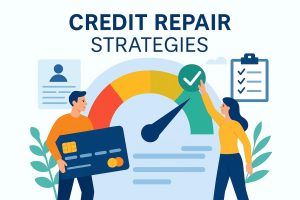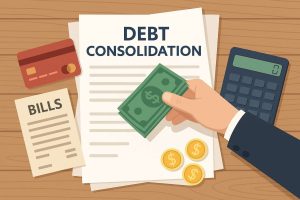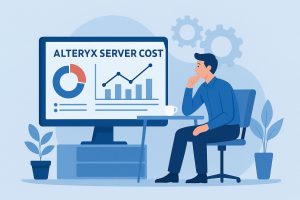Living with multiple debts can feel like a frantic juggling act. You have a credit card payment spinning in the air, a personal loan payment about to drop, and a medical bill threatening to fall flat—each with its own due date, interest rate, and minimum payment. The mental energy required to keep all these “balls” in the air is exhausting. The stress is constant, and the fear of missing a single payment can be overwhelming. What if you could stop juggling and instead create a single, streamlined financial conduit?
This is the core promise of a debt consolidation loan: to transform financial chaos into manageable simplicity. It’s a powerful strategy designed to take the complexity of multiple debt streams and merge them into one. But this financial tool is not a magic wand; it’s a strategic maneuver that, when executed correctly, can be the first significant step toward regaining control. This guide will walk you through the mechanics, the strategic considerations, and the essential mindset required to use a debt consolidation loan to truly simplify your financial life.
What is Debt Consolidation? Moving from Financial Juggler to Financial Manager
At its heart, debt consolidation is the strategic act of replacing complexity with order. It’s not about erasing debt, but about reorganizing it. The process is straightforward in concept: you apply for a single, new loan and use the funds from that loan to pay off all your other existing, high-interest debts in one fell swoop.
The immediate result? The frantic juggle ceases. Instead of multiple payments flying at you from all directions, you are left with:
- One single monthly payment.
- One single interest rate.
- One single due date.
You transition from being a frantic debt juggler, constantly reacting to the next bill, to a proactive financial manager with a clear, predictable plan. The mental clutter dissipates, replaced by a singular focus on a clear objective.
The Strategic Blueprint: Is a Debt Consolidation Loan Your Right Move?
While the appeal of simplicity is powerful, a debt consolidation loan is a significant financial decision that isn’t right for everyone. A successful outcome depends on a clear-eyed assessment of its advantages and the realities it presents.
The Allure of Simplicity: The Powerful Advantages
- One Payment, One Focus: The most immediate benefit is the profound psychological relief that comes from streamlining your obligations. Your financial to-do list shrinks dramatically, freeing up mental bandwidth to focus on budgeting and long-term goals rather than just keeping your head above water.
- Escaping the High-Interest Treadmill: This is the primary financial incentive. Many people use consolidation to tackle high-interest credit card debt, which often carries APRs of 20% or more. A personal loan for debt consolidation, if you qualify, could offer a fixed interest rate that is substantially lower. This means more of your payment goes toward reducing the principal balance rather than just feeding the interest machine.
- A Clear Finish Line: Unlike the seemingly endless cycle of credit card minimum payments, a consolidation loan is an installment loan with a fixed term. You will know from day one the exact date your debt will be fully paid off. This defined endpoint can be an incredibly powerful motivator, transforming a vague sense of being in debt into a concrete project with a completion date.
The Critical Considerations: Potential Downsides and Realities
- The Root Cause Reality: It’s a Tool, Not a Cure: This is the most crucial point to understand. A consolidation loan reorganizes your debt; it does not solve the spending habits that created it. If the underlying behaviors aren’t addressed, you risk accumulating new debt on your now-empty credit cards, leaving you in a worse position than when you started.
- The Danger of the Empty Slate: Paying off your credit cards to a zero balance can be deceptively tempting. Without discipline, it’s easy to view that available credit as newfound spending power. A successful consolidation strategy requires a firm commitment to not rack up new balances on the very cards you just paid off.
- Calculating the True Long-Term Cost: A lower monthly payment doesn’t always mean you’ll pay less overall. If you choose a very long repayment term, even with a lower interest rate, you could end up paying more in total interest over the life of the loan. Furthermore, some loans come with origination fees (a percentage of the loan amount), which should be factored into your total cost calculation.
Charting Your Course: The Step-by-Step Process to Consolidation
If you’ve weighed the pros and cons and decided to proceed, follow this structured approach to ensure a smooth and effective process.
Step 1: Conduct a Full Financial Audit Before you can plan your route, you need to know your exact starting point. Create a detailed list of all the debts you intend to consolidate. For each one, write down the current balance, the interest rate (APR), and the minimum monthly payment. This will give you a total consolidation amount and a clear picture of the interest rates you need to beat. At this stage, you should also check your credit score, as it will be the single biggest factor in determining the loan terms you’ll be offered.
Step 2: Explore Your Lending Options Don’t limit your search to a single source. Investigate different types of lenders, as each has unique offerings:
- Credit Unions: Often offer competitive rates and more personal service, especially for existing members.
- Traditional Banks: A good option if you have a strong existing relationship and a good credit score.
- Online Lenders: These platforms often have a streamlined application process and may have more flexible qualification criteria than traditional banks.
Step 3: Run the Numbers Diligently As offers come in, your job is to be a meticulous analyst. Don’t be swayed by a low monthly payment alone. Compare the Annual Percentage Rate (APR), any origination fees, the loan term, and calculate the total amount of interest you’ll pay over the life of the loan. The winning offer is the one that saves you the most money in the long run and fits comfortably within your monthly budget.
Step 4: Execute the Plan and Close the Loop Once you accept a loan, the funds will either be disbursed directly to your creditors or deposited into your bank account for you to pay them off. This is a critical moment. As soon as your old debts are paid, the temptation to use those now-empty credit cards will be at its highest. Many financial experts advise either closing those accounts or putting the physical cards away to remove the temptation.
Beyond the Loan: Essential Habits for Long-Term Financial Serenity
Successfully using a debt consolidation loan is the first major battle, but winning the war for financial freedom requires new habits. Your streamlined payment should be the foundation upon which you build a healthier financial future.
- Create a Realistic Budget: Now that your finances are simplified, track your income and expenses to ensure you’re living within your means.
- Build an Emergency Fund: A small savings cushion (even just $500 to start) can prevent future unexpected expenses from becoming new debt.
- Shift Your Mindset: View this as an opportunity to reset your relationship with money, focusing on long-term goals over short-term wants.
Conclusion: Reclaim Your Financial Peace
The weight of multiple debts is more than just a financial burden; it’s an emotional one. A debt consolidation loan offers a clear, actionable path to silence the noise and simplify the chaos. It empowers you to stop the frantic juggle and start a structured, manageable repayment plan. By approaching it with a strategic mindset, acknowledging its realities, and committing to healthier financial habits, you can transform this powerful tool into your first definitive step toward lasting financial control and peace of mind.










